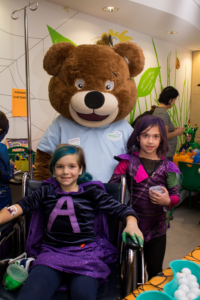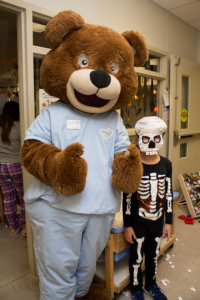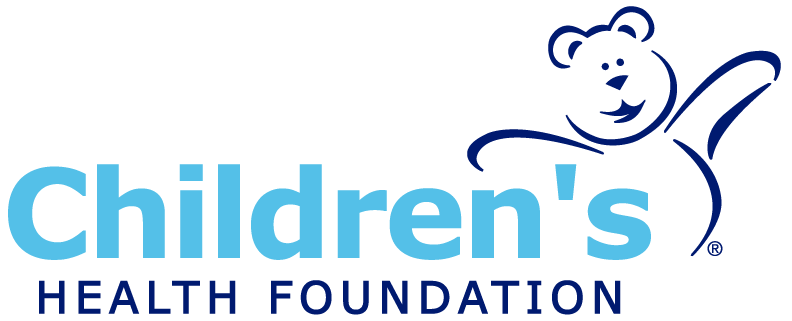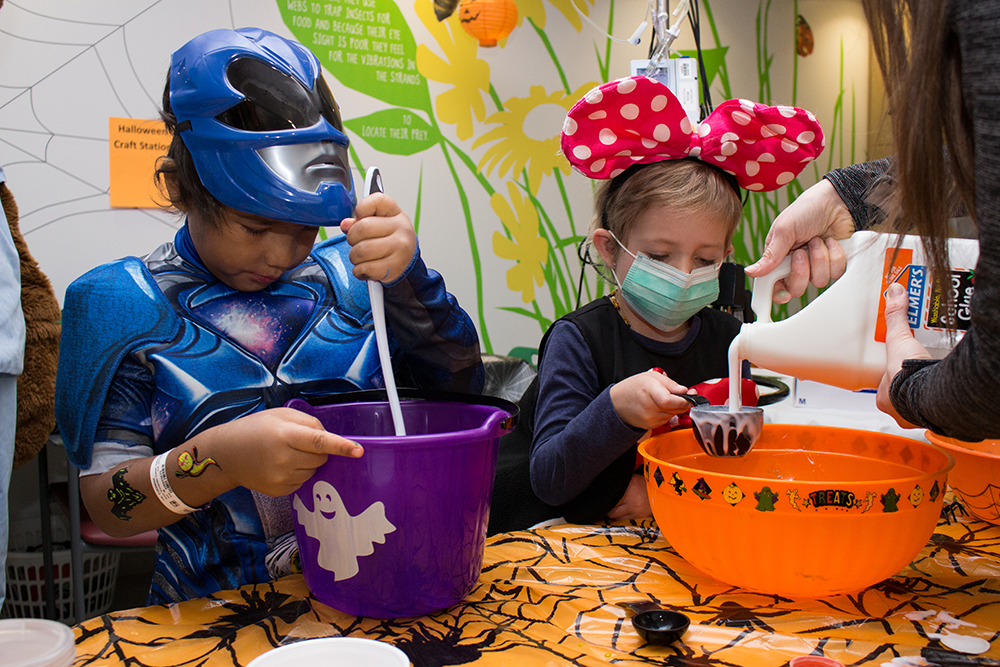We are sharing with you a Halloween Safety Guide filled with tips to keep your young ones safe this season. These tips are based on the Government of Canada’s Halloween Safety guide and have been approved by our Children's Hospital Injury Prevention Team.
Choose the Right Costume
 Ensure your children are dressed safely for Halloween.
Ensure your children are dressed safely for Halloween.
- Fire Safety: Avoid costumes with flowing skirts, capes, or baggy sleeves, as these can easily catch fire. Opt for costumes and accessories made of nylon or heavyweight polyester, which are less likely to ignite. Remember, “flame-resistant” does not mean fire-proof.
- Visibility: Choose brightly colored costumes to ensure your child is visible to motorists. Adding reflective tape, bands, or lights can further increase visibility.
- Face Safety: Use makeup or face paint instead of masks, which can obstruct vision or breathing. Always perform a patch test to check for allergies, even with “hypoallergenic” products. If a mask is necessary, ensure it fits properly and does not impede breathing or sight.
- Fit and Safety: Avoid costumes that are too big or have long, dangling pieces that could cause tripping. Select costumes that fit well and can be layered over warm clothing to protect against cold weather.
- Accessories: Choose toy weapons and accessories made of soft or flexible materials to prevent injuries.
Avoid Danger When Decorating
Stay vigilant for fire hazards and other risks while decorating.
- Pumpkin Carving: Allow children to draw faces or designs on pumpkins but leave the carving to adults.
- Fire Safety: Avoid using real candles; instead, opt for battery-operated candles or small flashlights in your jack-o-lanterns. Keep all fire hazards like candles, lighters, and matches out of children’s reach.
- Electrical Safety: Check all decorative lights for damage and ensure they are certified by recognized organizations such as the CSA or ULC. Avoid overloading extension cords and using lights with broken or frayed wires.
- Home Safety: Clear walkways of any tripping hazards and keep outdoor lights on to ensure visibility for trick-or-treaters.
Stay Secure While Trick-or-Treating
 Keep your children safe by teaching them to stay visible and aware of their surroundings.
Keep your children safe by teaching them to stay visible and aware of their surroundings.
- Accompaniment: Accompany young children while trick-or-treating until they are old enough to go with friends. Never let children go out alone.
- Visibility: Equip each child with a flashlight to increase visibility.
- Safety Rules: Teach children to stay in well-lit areas, only visit homes with outside lights on, and never enter homes or cars.
- Street Safety: Instruct children to look both ways before crossing streets, cross at established crosswalks or intersections, and never between parked cars. If you can, make eye contact with drivers when crossing roads and never assume they’re going to stop. Use sidewalks whenever possible and limit distractions when trick-or-treating.
- Drivers: Go slow through neighbourhoods, manage distractions in the car, and remain vigilant while driving. (This is especially true for teen drivers)
Be Cautious with Candy and Toys
Always inspect treats and toys before allowing children to play with or consume them.
- Inspection: Instruct children not to eat any treats until they have been inspected by an adult.
- Choking Hazards: Be cautious with treats that pose a choking risk, such as chewy candies, peanuts, and hard candies. Check toys for small parts that could be hazardous to young children.
Halloween Food Safety
Trick-or-Treating Tips for Kids with Allergies
Ensure children with food allergies have a safe Halloween by following these guidelines:
Before Trick-or-Treating:
- Have a meal before heading out to prevent snacking on uninspected treats.
- Instruct children to only accept commercially wrapped treats.
After Trick-or-Treating:
- Inspect all treats for tampering. Discard any homemade or unwrapped items.
- Check labels carefully for potential allergens. Avoid products with “may contain” warnings if the child has known allergies.
Allergy Awareness:
- Educate children about the symptoms of allergic reactions, which can range from mild to severe, including hives, difficulty breathing, and anaphylaxis.
- Always have an epinephrine auto-injector available if your child has a known severe allergy.
Common Food Allergens
Food allergies can pose serious risks. The most common allergens include peanuts, tree nuts, sesame seeds, milk, eggs, fish, crustaceans, soy, wheat, and sulphites. Always check ingredient labels carefully.
Did you know?
Health Canada provides resources and guidelines to help consumers understand and manage food allergies. Visit their website for more information on allergen labelling and food safety practices.
Gluten-Related Disorders and Celiac Disease
Celiac disease is an immune-mediated disorder triggered by the consumption of gluten, which can lead to serious health complications. A strict gluten-free diet is the only current treatment.
- Symptoms: Can vary from gastrointestinal issues to fatigue and depression.
- Diagnosis: Involves blood tests, biopsies, and symptom management through a gluten-free diet.
Gluten Sources:
Barley, rye, triticale, wheat, and oats are common sources of gluten. Gluten-free oats are generally safe for those with celiac disease, provided they are not contaminated.
Based on the Government of Canada’s Halloween Safety guide.


